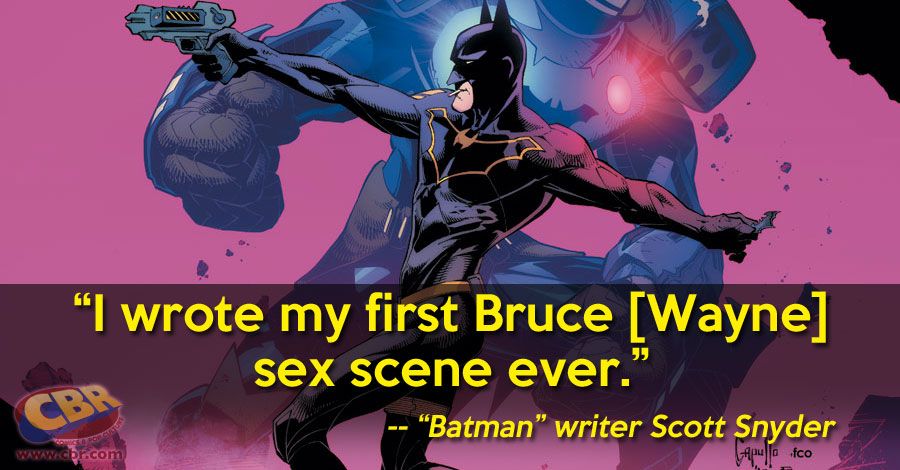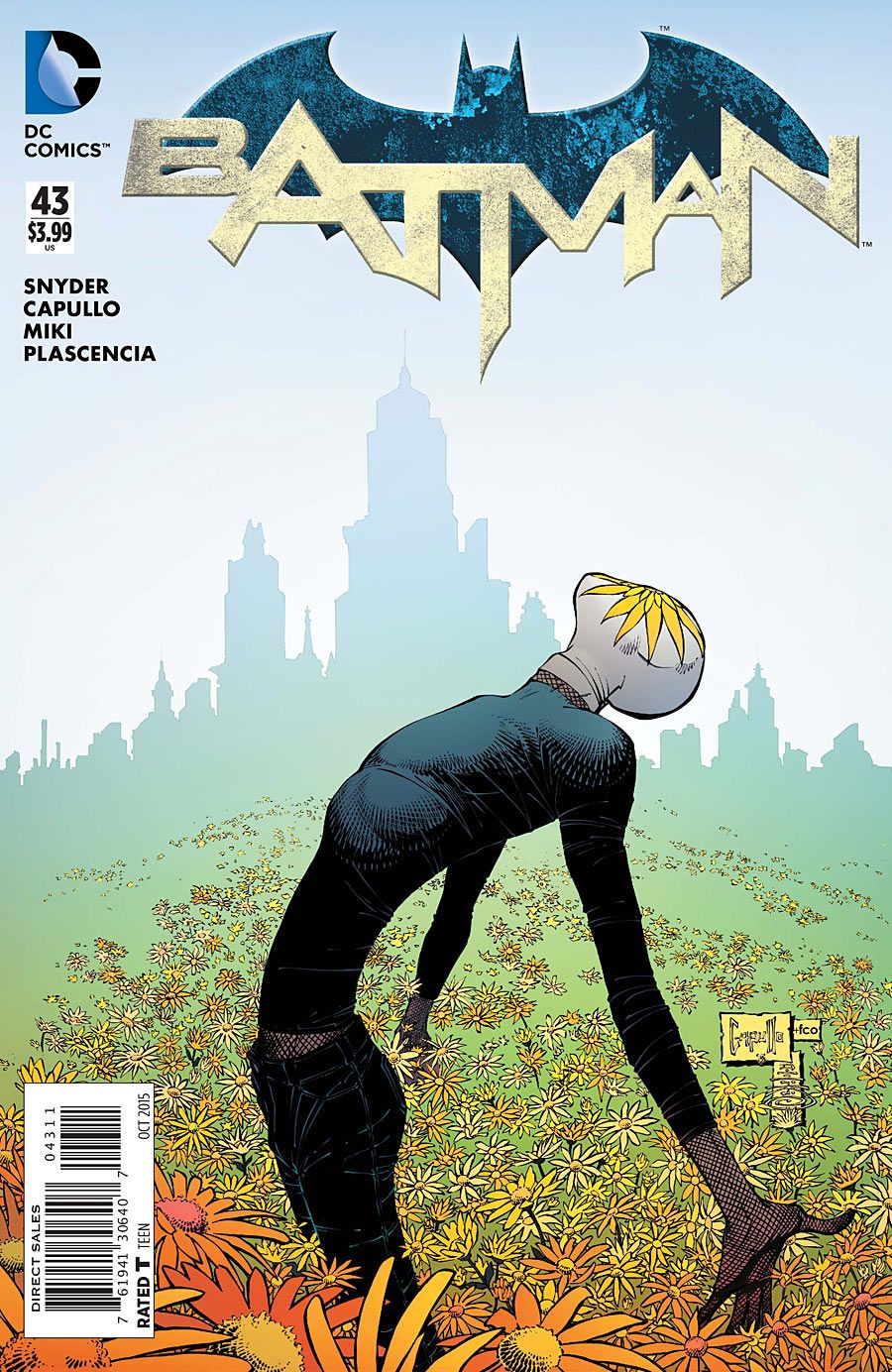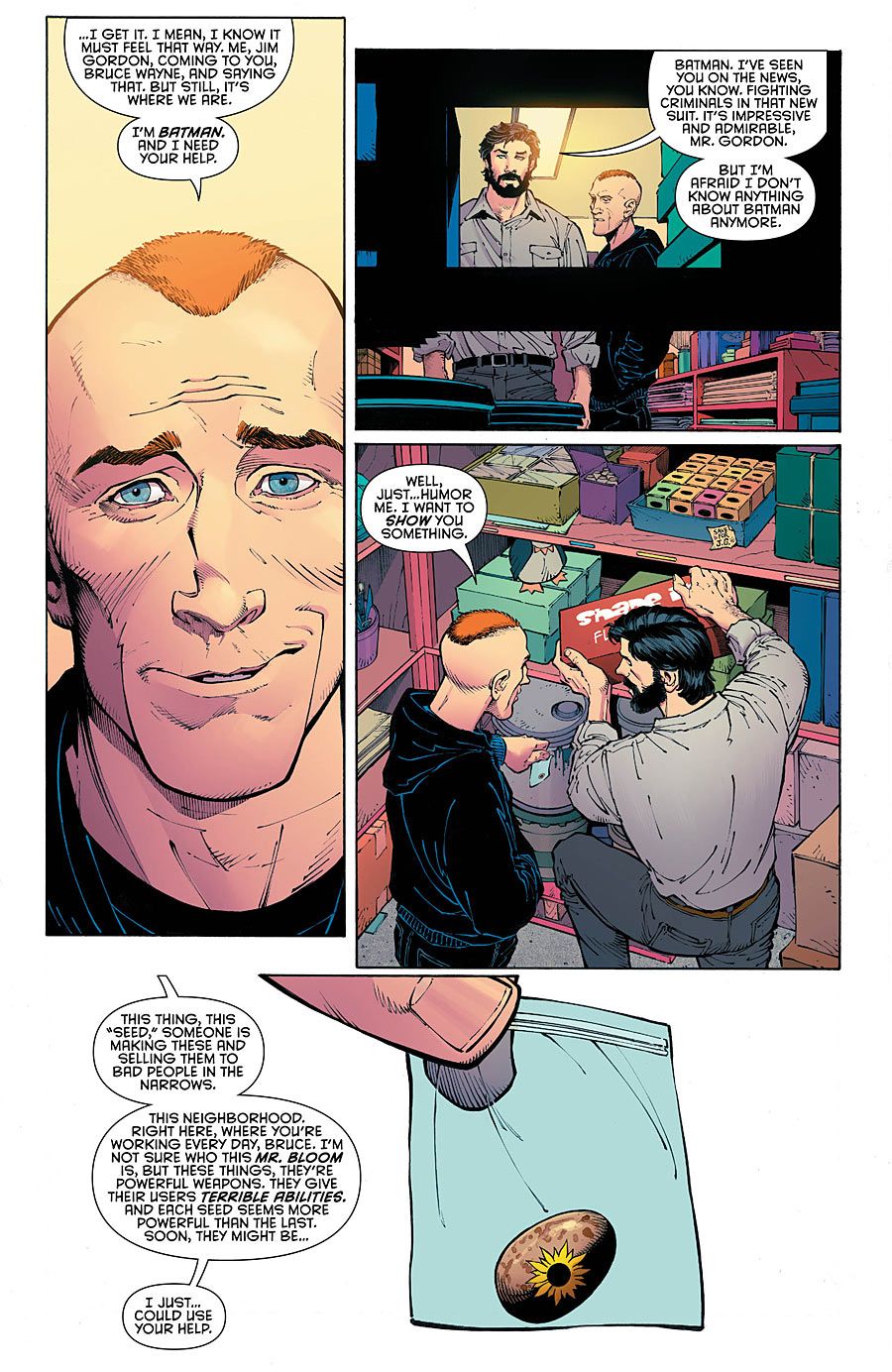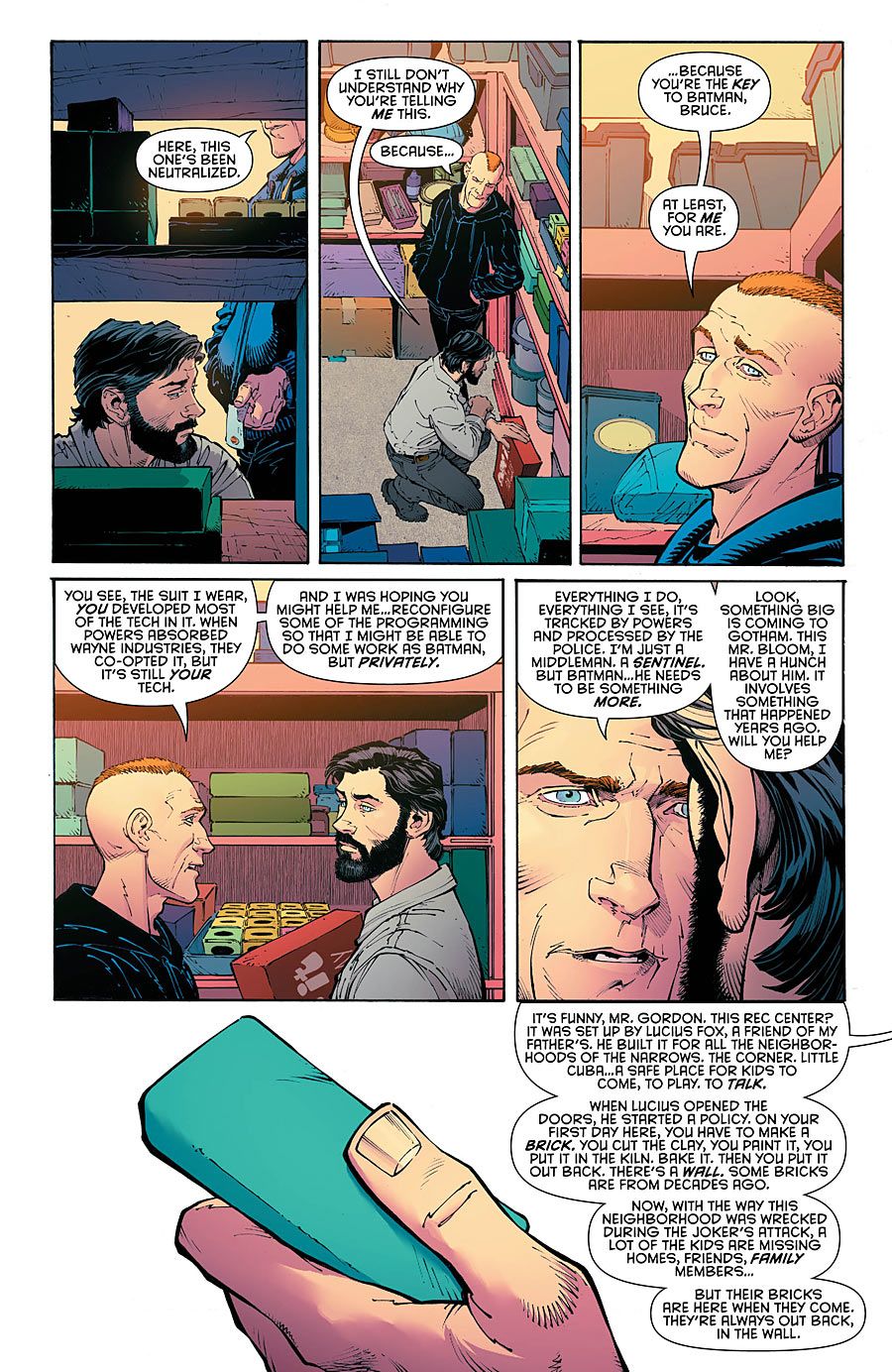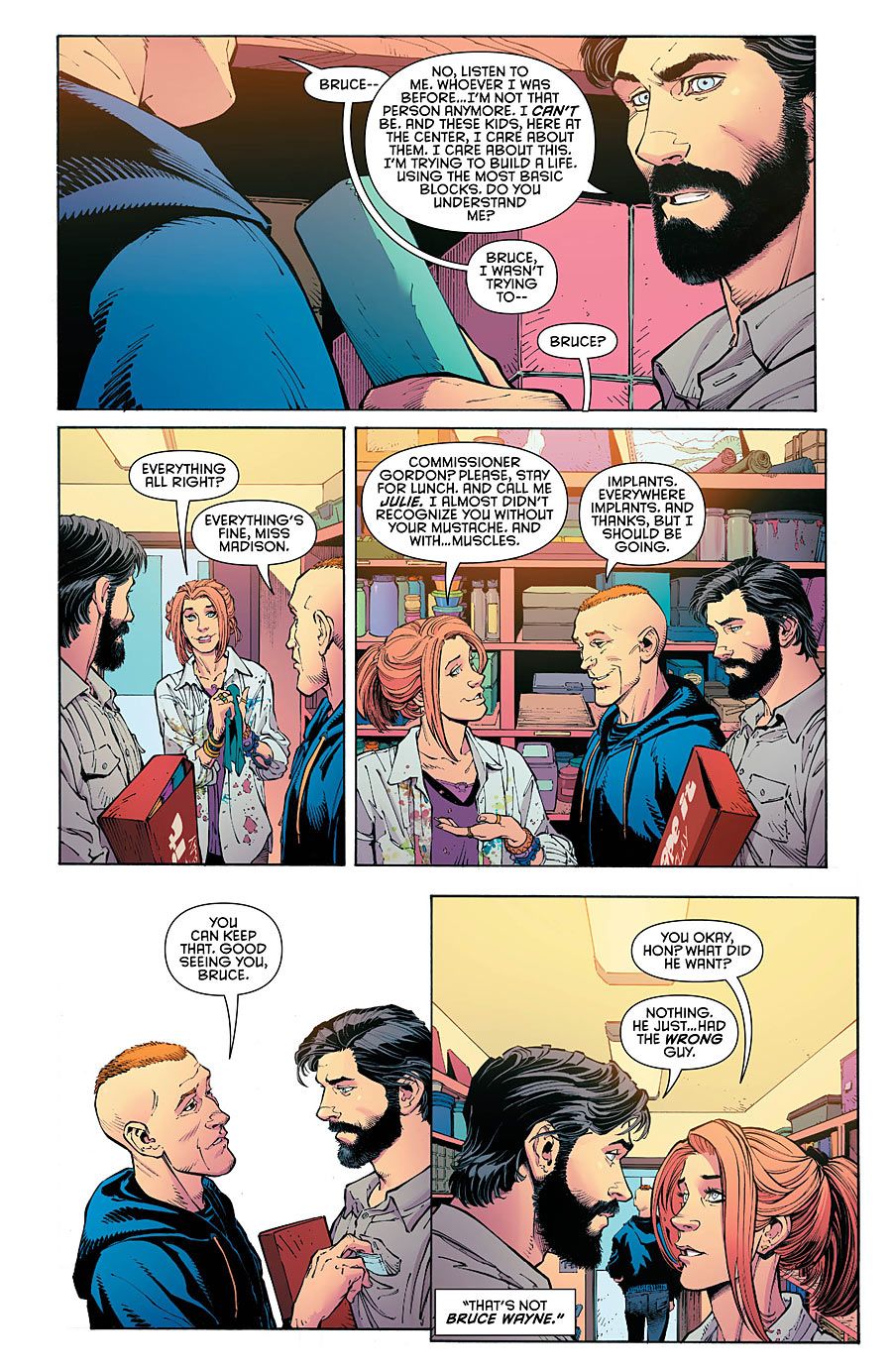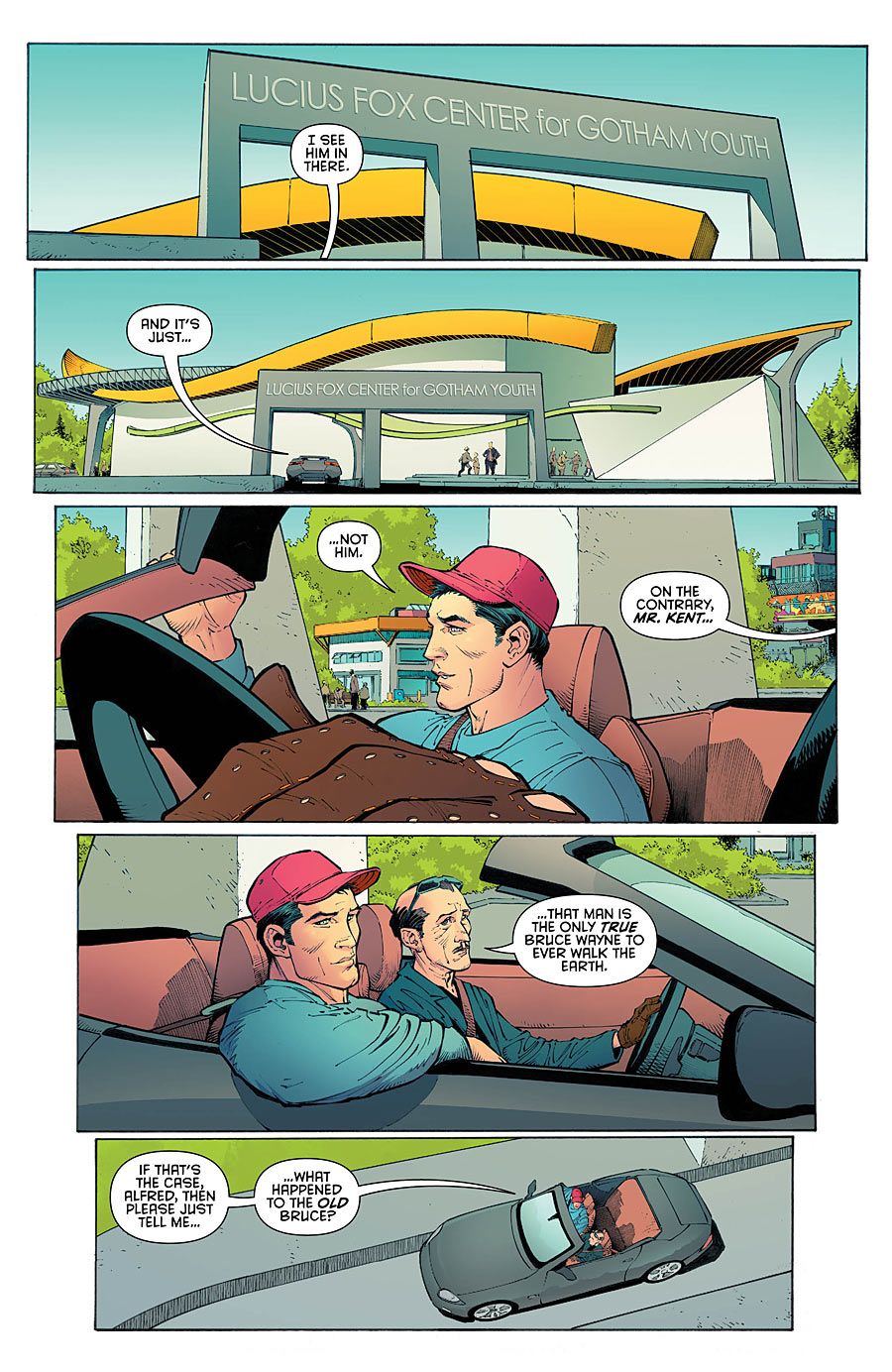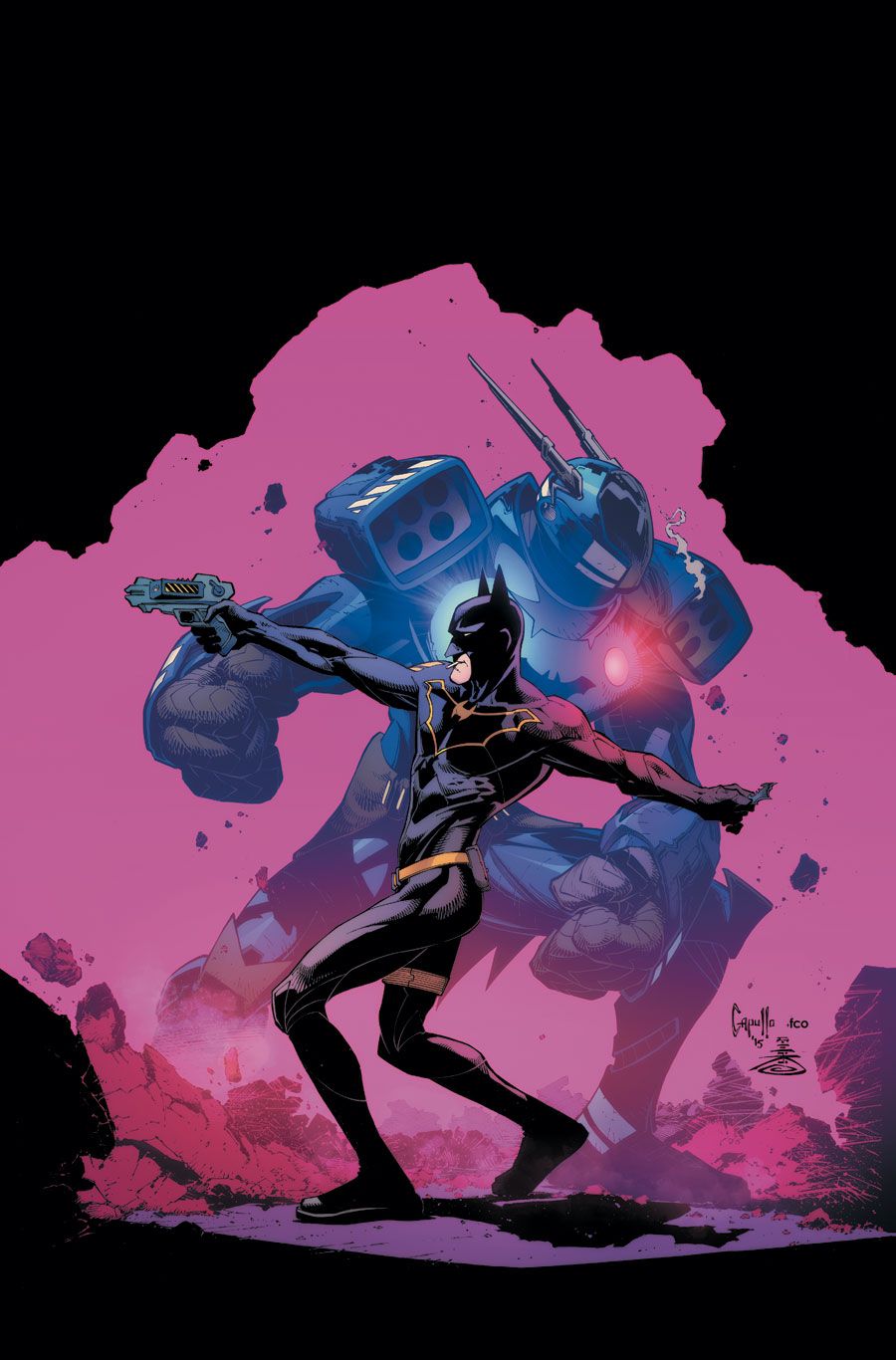SPOILER WARNING: The following interview discusses specific events and plot points from "Batman" #43, on sale today.
No one reading "Batman" would ever accuse Scott Snyder and Greg Capullo of maintaining the status quo, as the creative team behind DC Comics' top-selling series have continually reinvented Gotham and the iconic Dark Knight patrolling its streets for nearly four years.
And beyond reimagining classic characters like Bruce Wayne, The Joker and James Gordon, Snyder and Capullo have also restocked Batman's infamous rogues gallery -- first with the mythos-changing Court of Owls and now with the wicked weed growing through the cracks in Gotham, Mr. Bloom.
RELATED: Snyder & Capullo Talk Life After "Batman: Endgame," Gordon and Partnership
CBR News connected with Snyder and Capullo to discuss this week's "Batman" #43, featuring the debut of Mr. Bloom as a counterpoint villain to Gordon's Batman. in addition to discussing a possible connection between the new villain created specifically for the "Superheavy" arc and The Penguin, one of Batman's longest-standing enemies, the two shared details about Batman's failed attempts (so far) at literally duplicating his efforts, what Alfred might do with all of his newfound time and what to expect from the love life of DC Comics' real "super" man, the character known only as LumberBruce.
CBR News: DC Comics never used the term 'reboot' when describing the new "relaunch," but man, you guys have basically given Bruce Wayne the old Ctrl+Alt+Del! Now, Jim Gordon is doing his very best, but what does the death of Batman mean for the DC Universe, especially for characters like Alfred and Superman?
Scott Snyder: I think what we are really trying to do with this one is explore that question. For me, this isn't just a soft death. The Batman that we know, the one that Greg and I worked with for the last five years, died. And everything that came with him died. And now it's a new moment where, in the void created by that [death], what grows? What villains grow? What heroes grow? Does someone step up and try and be a more human Batman? A Batman that address problems that rise in the vacuum created by his disappearance? What his death means for the DCU is a question that will be answered in a lot of the other books, as well, like "Grayson" and "Robin: Son of Batman" and "Batgirl." But for us, this is really a story about, what if Batman died and Bruce Wayne came back?
The three main characters in this story are Jim Gordon, Bruce Wayne and Duke Thomas, and all of them are answering questions in different ways.
We have a really interesting exchange between Jim and Bruce that sheds more light on Bruce Wayne's current status. I love this line, as it works on so many levels: "You're the key to Batman, Bruce." Jim wants to do some work as Batman, privately. What's he asking Bruce to do?
Snyder: I think Jim, initially, thinks that to be Batman, you have to be larger than life and mean certain things, and you have to embody these giant values. And what he realizes at a certain point, after talking to Julia, is that's not really what it is. It's not just about adhering to particular rules, or carrying yourself differently than you would have otherwise. Batman is an extension of who you are. And for Jim, that means it's something that will work within the system and will be about the sorts of institutions that he's believed in his whole life and worked for his whole life, even if he is able to bend the rules and go above and beyond the way he always did it as a police officer.
For me, Jim is someone who always worked overtime and really reached to go beyond what was expected of him. And that's the same thing here but what that requires is a little freedom from bureaucracy. He's coming to Bruce saying it's not that I need to be an outlaw but I need to be somebody who is able to do the kinds of things that make someone a hero. Whether they work within the system, or outside of it.
Greg, we've talked in the past about drawing Jim Gordon with a mohawk. Talk us through Bruce Wayne with a beard.
Greg Capullo: [Laughs] I have to tell you...
Snyder: I know what you're going to say.
Capullo: I know that you do. [Laughs] Here's the backstory: As long as I've been working with Scott, he would include photos that he took from the Internet and include them in the script. Now, we've been working together for more than four years and it's only in the last month or two that I got an application that saw those photos. [Laughs] It's makes me wonder why he continued to send me these photos after all of those years, because he would always gets work back that doesn't look remotely close to the photos that he took the time to send. He never stopped. But the best one now, that I can see, is a picture of a bearded man. "Here's what the beard should look like." I've seen beards before. I actually used to have a beard. [Laughs] I can picture Scott bouncing a kid on his knee and saying, "I'll be right there, honey. I just have to send Greg a picture of a guy with a beard."
[Laughs] But back to your question, it's not a big deal drawing Bruce with a beard. I think he looks kind of cool, actually. He still looks like Bruce. You can tell it's him beard and all. It's just another cool way of portraying him. And apparently, the girls like it. Beards are in. And Bruce is always in, so he's doubly in.
RELATED: Snyder Talks the Joy of "Batman," Joker's True Identity & When He'll Leave the Series
Snyder: I was speaking with Ming Doyle and Becky Cloonan at the DC Summit in January and I was telling them the idea and they were like, "He has a beard?" And I showed them the sketches and they were like, "It's LumberBruce." I sent them pictures when we had final art, and Ming sent back emojis of hearts and stuff, so I knew we were on the right path.
Dick Grayson is always the sexy one. Having written him, I received so many requests to do shirtless shots and all of that stuff and I was always like, "This is a very serious story. There's no time for that." And with Bruce, if we give them a shirtless shot, it's crickets. [Laughs] It didn't hurt giving him his own look. If Dick is the young dude, Bruce is a man. LumberBruce lives!
I also really enjoyed the scenes and panels shared by Mr. Kent, as Alfred calls him, and Alfred. I realize full well that Clark had Ma and Pa Kent growing up but reading this exchange makes me think that the Man of Steel could use an Alfred in his life, especially with respect to the current status quo and the "Truth" arc. With Alfred having a little more time on his hands, do you think he would be interested in a new job?
Snyder: [Laughs] I always feel like Alfred would live happily if Bruce was retired or Bruce left. I think Alfred would become an ultimate fighter or a painter or whatever he wanted to do -- something totally unexpected. Maybe he would repair old books. I don't think Alfred has figured out what he would do if Bruce Wayne didn't need him. There is definitely a series there for anybody that has no sales expectations at DC. [Laughs] "Alfred." Or maybe it's "Pennyworth." It's Alfred going to Venice and just living his life.
I would read "Pennyworth."
Snyder: And I would write it. I think that all of these characters deserve their own series. But I also think all of these characters deserve a vacation from the terror and the horror and the tragedy. Bruce actually gets a break coming up here. I wrote my first Bruce sex scene ever. It's coming, Greg, in the next script. Everyone is always on me about it. Bruce never has any romance. But now that he's like this, I wrote a scene with him where he's with Julie and things happen and whatever. I think it's a really good scene. You write these scenes and you're like, "Oh, they're so happy." But the horrible thing is, isn't it even worse when you give them this happiness? Because you know that you're going to rip it away from them. I feel even worse about myself. I'm even more evil.
Every time I see Julie on a page, I feel unsettled. Because, like you said, I know you are going to rip it away. Can Julie Madison be trusted?
Snyder: You're so suspicious, Jeff. [Laughs] She's definitely a big part of the story. She was Bruce's first girlfriend, both in our continuity and actual old continuity -- pre-New 52. She was the first love interest Bruce ever had, back in the 1930s and 1940s. I wanted to bring back and re-invent that character because, again, we've never given Bruce a lot of romance and love. And here, because he's incapable of being Batman, he's doing something that makes him really happy. Is he someone that could have a relationship if he isn't obsessed and driven like he was before? And is that a good thing or a bad thing is a big part of the story.
I love the high concept of a machine that would ensure that there would always be a Batman. "It would use his DNA to grow each successive Bruce to age 27, instill in him all of original Bruce's pain, all of his training, all of his memories, up to the moment that he decided to become Batman." While Bruce hasn't finished it -- yet -- can you talk about the machine and its implications?
Snyder: I first introduced that in "Detective Comics" #27. I did a short story in there with Sean Murphy. I was really proud of it. I really believe that the continuity that Greg and I have established for our version of Batman is pretty intensely mortal as opposed to other ones. I think he is very aware of his own mortality. He tries to ignore it, but his mortality is always creeping in the background in our run. For me, I thought the thing that he would do as the final solution to what would happen when Batman dies, which is different than "The Dark Knight Returns," he would create a mortal version of himself that would always be there. Because he understands that the strength of Batman comes from his own mortality, and the fact that he's one of us. And yet, at the same time, if he dies, he leaves this huge vacuum in Gotham. I love the solution that, as Batman gets older, he would create this thing that would always make a new, young Batman to replace the old Batman and the old one would go in the furnace and would take everything in the cave with him, which would leave the cave empty for the next Batman.
Here, it's a nod to that story, but it's also meant to show that the Batman that we created is dead. Our version of Batman and all of the things that came with him -- the Court of Owls, all of the stuff with The Joker -- are over. And whether they come back is to be seen, but for this particular moment, all of that is in the furnace. I wanted to use this machine to really bring that point home and say, "Everything in this endless chain of unnatural births from Batman to Batman to Batman is now broken and this new thing has hatched." And that's Bruce Wayne, who is free of that specter, free of that ghostly past.
We finally get to see Mr. Bloom in action, and he is one scary dude. You've described him to me in the past as "the weed that grows in the cracks when there is real fracture between the police and the people and business and local government." Now that Mr. Bloom has been truly revealed, can you share some more insight into who and/or what he is?
Snyder: I think that he is what you mentioned as we talked last time. The thing that I would add to that, other than him being this dark thing growing in the cracks of a city where things obviously haven't gone well over the past year, is that he is also something that is very cunning. He's a real person and he has a strategy that is totally the mirror to what Jim Gordon is trying to do. For me, that makes him a perfect villain to write.
One of things that's so fun is, when I saw Greg's design for how he looked, initially, and also how he looked in "Batman" #43, when I saw him big and really stretched, it made me add to the way he moves and changes in the next issues. I am finishing "Batman' #46 right now, and the way he moves through a crowd is all based on the way that Greg designed him. I love his long fingers, so, as an example, when he moves through a large crowd and moves towards Jim Gordon, he just stabs people without really realizing it. His fingers just shoot out now and then and randomly take people out. Just like needles. They just go and get you, and you don't know if you've even been hit until you drop. It's a lot of fun, because I know who he is, conceptually, but I think as you write him longer, he's becomes more and more scary. And part of that is working off of the great designs that Greg has created for us.
Capullo: He [Mr. Bloom] had a name and a connotation of what the character is about, so when Scott tells me "weed," you get that last splash page, which was nothing but fun to draw. I was just trying to get that feeling of a weed. You know, like a weed blowing in the wind -- all bent over and straggling. And then he's almost spider-like. He has the fingers and he's poised over his victims almost like a weed. The way he stands, it's all knock-kneed at opposing angles. That gives him bigger tension, and makes him even more weedy and gnarly. That was my favorite page, after the shark sequence.
[Laughs] The shark sequence was awesome.
Capullo: Thank you. That was quite a daunting task to take care of that scene.
You mentioned Mr. Bloom leaning over his fallen victim, and in this instance, the fallen victim is Oswald Cobblepot. Are things going to get better for Oswald, or did we just witness the death of The Penguin too?
Snyder: No, no. We would never do in a major character like The Penguin like that in our run. We're not very subtractive. We haven't really offed anybody, even Bruce Wayne. The story was never really about Bruce's death -- it was more about Batman's death and what would happen if Bruce came back pre-the specter of Batman. Who would he be? Knowing that was a story that I'd never seen before and pairing it with Jim Gordon, I thought we could double-down on the newness of it in a way that would really make it feel like unexplored territory.
As for The Penguin, he comes back. I just wrote a scene with him and Duke Thomas. Duke Thomas really follows that plotline. What is Bloom's history with Penguin? Why would he be the only villain that he approaches? How does he know him? And Duke ends up sneaking into the re-invented Iceberg Lounge and winds up dealing with more criminals than he can handle. His story is a lot of fun.
I am glad you mentioned Duke Thomas, because earlier you said the three main characters in this story are Jim Gordon, Bruce Wayne and Duke Thomas. I was originally going to ask if we should be worried for Duke, and based on your last answer, it sounds like we should be?
Snyder: You should worry for everyone in Gotham. [Laughs] No one is ever safe, and no one is ever protected.
"Batman" #43 by Scott Snyder and Greg Capullo is available now.

